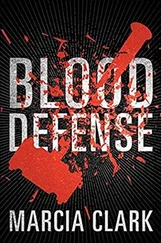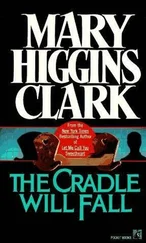“Lack of focus?” I asked. “Seems to me the games require a lot of focus.”
“Only in a superficial sense,” Michael said. “You have to pay attention to what you’re doing, but the focus is constantly shifting from one obstacle to the next, with only fractions of a second per target. So the focus is extremely fragmented.”
“In general, though, the games may encourage what’s already there. But they don’t create it,” Jenny said.
“You said they like to talk to people about their pisstivity with the world and their plans to get revenge,” Bailey said. “Isn’t that what you guys always say people should do? Talk things out? How come it doesn’t do anything for them?”
“Because they’re not talking constructively, with the purpose of understanding their feelings,” Michael said. “They’re just venting, spewing. When you talk to a friend or lover about your feelings, you’re trying to understand, to gain some awareness of your situation. Not these people. They’re just looking for an audience. So talking only feeds their rage.”
“I assume Otis Barney is a gamer?” Jenny asked.
“Yes,” I said. “So I guess that doesn’t necessarily prove anything.”
“Not in and of itself,” Michael said. “But what is significant is that, based on what you describe, Otis is a follower. That means your second shooter is certainly the leader. I can’t think of a case in which there were two leaders.”
“Okay,” Bailey said. “We’ve got a leader and a follower, and we shouldn’t bother canvassing video game sites. We should ask around about kids who did a lot of venting about being persecuted or waxed on about gun stuff. What else?”
“Have someone who’s good with computers check the Internet,” Jenny said. “This type of criminal almost invariably writes about his desire to kill. I’d be very surprised if you didn’t find writings, blueprints, or drawings showing how they planned the attack. Check out Tumblr, Instagram; I hear Pheed is getting hot these days. I’d also check with English teachers for any poetry, short stories, or essays that depict homicidal fantasies.”
“What about someone who’s been diagnosed as mentally ill at some point?” I asked.
“Typically, no,” Jenny said.
“No?” Bailey said. “You’ve got to be kidding. You’re saying these sick fucks are normal?”
“No,” Michael said. “We’re certainly not saying that. We’re just saying they’re not necessarily mentally ill-”
“They have personality disorders,” Jenny said. “Usually borderline personality disorder or antisocial personality disorder. But those are not mental illnesses. In fact, people with those disorders are usually highly intact, organized, and articulate. Frequently, very intelligent.”
“What about Adam Lanza, though?” Bailey asked. “Didn’t he have Asperger’s?”
“So I’ve heard. But again, that’s not a mental illness,” Michael said.
“Regardless, our shooters are different, aren’t they?” I asked. “Don’t these guys usually kill themselves? Like Harris and Klebold?”
“Yes,” Michael said. “And your shooters probably will too…ultimately. I doubt they plan to be taken alive.”
I mentally replayed the images on the video footage taken from inside the gym, our walk-through at the school. “Fine by me.”
Tuesday afternoon, October 8
We promised tokeep the doctors up to speed on the investigation, and they promised to review any “interesting” writings we found on the Internet or at school. After they left, Bailey glanced at the clock on the wall, which was slightly crooked. It had bugged the hell out of me through the whole interview. Maybe I lacked focus too.
“It’s lunchtime,” Bailey said. “You feel like eating?”
“Not really.”
She picked up the manila envelope with the photo of the shooter’s tattoo. “Then we may as well go see Charlotte and company.”
The traffic wasn’t bad. We made it to Woodland Hills in just under forty minutes. This time I had the chance to take in the neighborhood. It was pretty uniformly middle- to upper-middle class. Mature pepper and weeping willow trees and ’50s-style ranch homes showed that it wasn’t a new development. But it had always been a fairly nice one. Nothing flashy, but nice. Families had moved here, at least in part, to get away from the crime and violence of the inner city. The bitter irony was that at least two of those families had spawned the most vicious predators of all.
We found Charlotte, her mother, and Charlotte’s friends Letha and Marnie sitting over steaming cups of tea in a bright-yellow breakfast nook. The flowered curtains were parted to let in the pale sunlight. Bailey and I joined them at the table. I declined their offer of coffee. I’d had three cups in my room and a fourth at the station. Any more than that and I wouldn’t sleep till next year.
I took a moment to look at the girls. It had only been one day, but their haggard faces and haunted eyes showed the enormity of the trauma they’d suffered. I wished we could leave them alone to grieve privately and regain their balance. The whole world probably felt like a precarious high-wire act for them. On the other hand, maybe talking to us would give them a sense of control over the situation. In any case, we had no choice.
Bailey pulled out the photograph of the taller shooter’s wrist.
“Do any of you recognize this?” I asked.
Each girl examined the photograph, shook her head, and passed it on.
“What is it?” Charlotte said.
“I was hoping you’d tell me,” I said. Charlotte shrugged. “I heard Otis had a friend named Jason. They did a science project together a year or so ago. Does that ring a bell?”
They frowned in unison. “Jason…the only Jason I know graduated last year,” Letha said.
But that didn’t mean he wasn’t our tall shooter. “What did he look like?”
Marnie made a face. “An Ewok. Real short and really hairy.”
So much for Jason. Or at least that Jason. Maybe there were others. “Do you happen to remember the names of the science teachers for last year-which would’ve been what, your junior year?”
“Yeah,” Charlotte said. “I had Mr. Forster.”
“Who’d you guys have?” I asked Marnie and Letha.
Letha pulled her long hair forward over her right shoulder and began to stroke it. “Marnie and I had Ms. Sherman.” Her mouth turned downward. “We got sent to the principal’s office because we wouldn’t dissect a frog-”
“How can they kill animals just so high school kids can cut them up?” Marnie said. “It was so…brutal.” She hadn’t meant it to be ironic, but it landed hard anyway. On all of them.
We wrapped it up shortly after that and walked out to Bailey’s car. I stopped at the passenger door and spoke to her over the hood. “Is Principal Campbell back in act-”
“Dale, and yes, he’s reachable.”
We got into the car and Bailey called Dale, who got us the numbers for the evil Ms. Sherman and Mr. Forster. Both answered on the first ring and offered to meet us anytime, anywhere. It was a grim upside to a case of this magnitude: no one thought they had anything more important to do. We told them for now, we only needed a few minutes on the phone.
Ms. Sherman, who sounded more like Betty Crocker than Cruella De Vil, was a model of efficiency. She kept records for the past four years on her computer.
“I didn’t have any student named Otis Barney,” she said. “I did have a Jason a couple of years ago, but I think he would have graduated by now.”
Jason the Ewok, I guessed. We thanked her and moved on to Mr. Forster.
“Otis Barney? That name sounds familiar,” he said. “Hang on, let me go get my laptop.” A few minutes later, he was back. “Let’s see, this was last year, you say?” I confirmed it. “Okay, yes, I did have Otis Barney. No Jason though.”
Читать дальше












